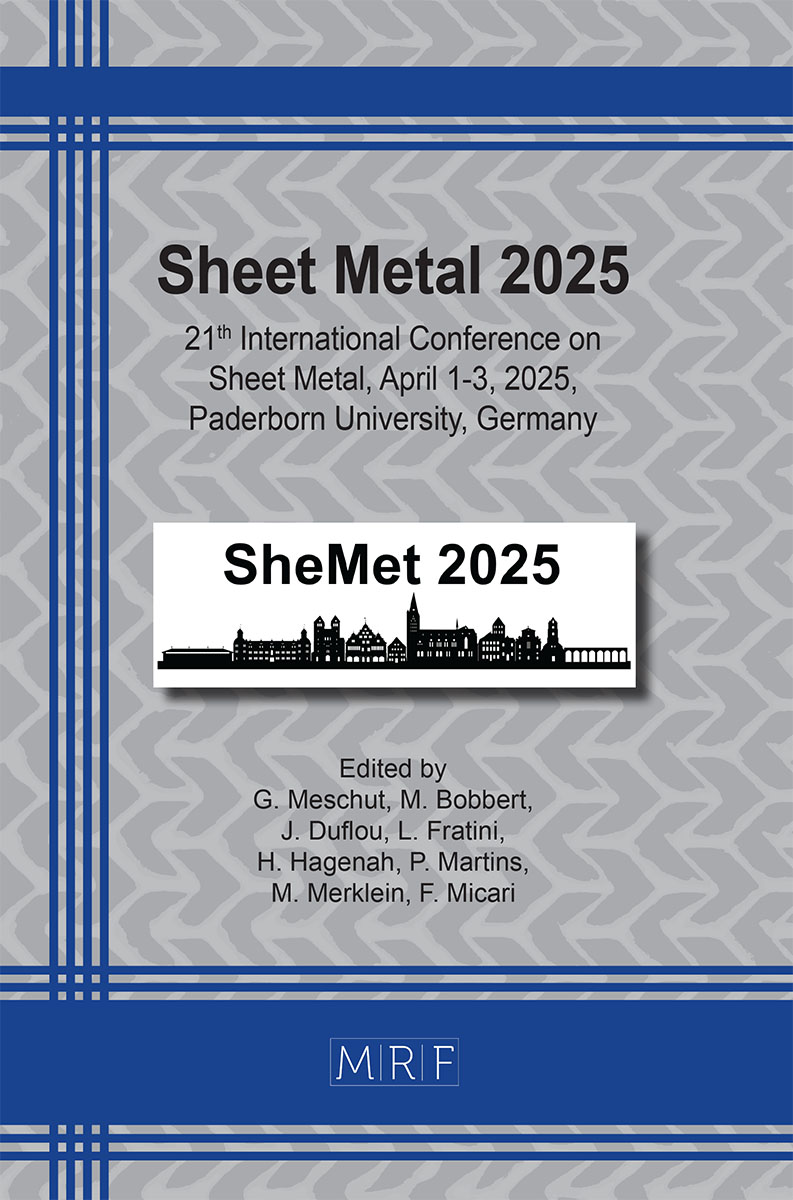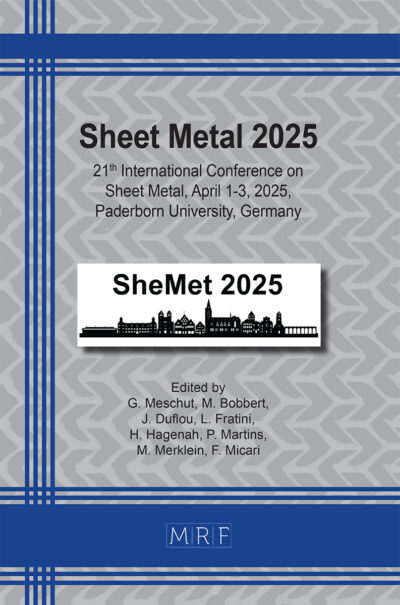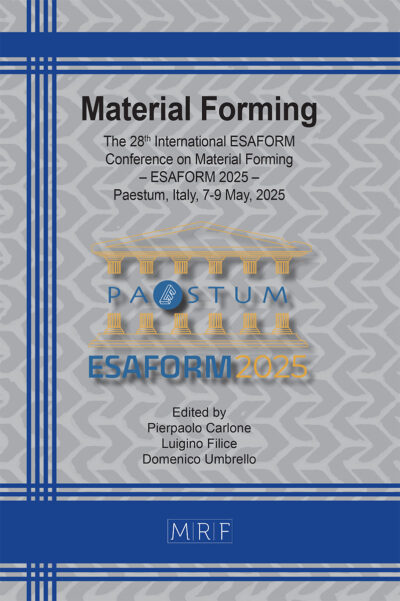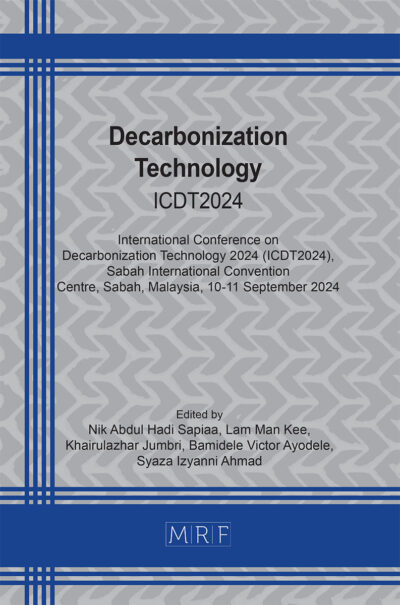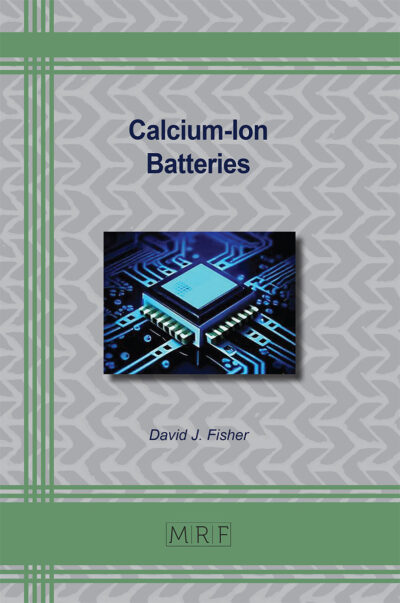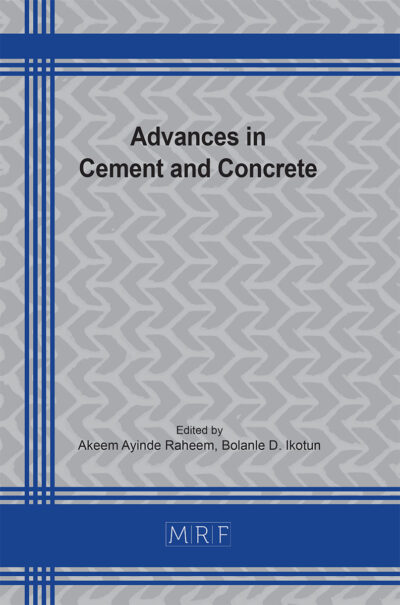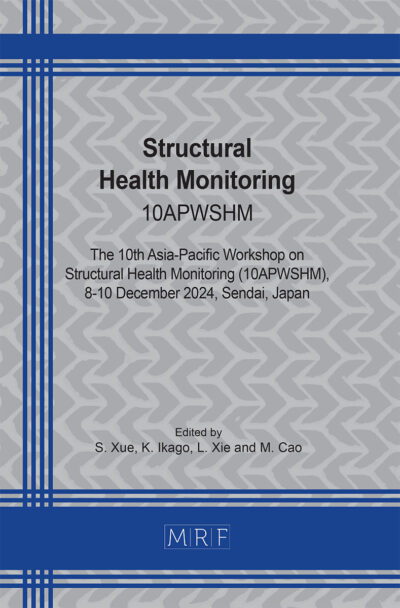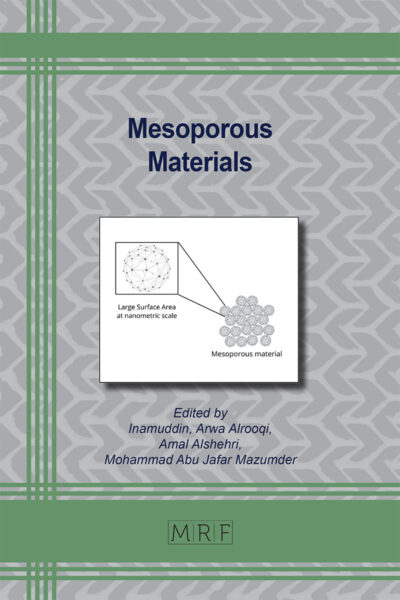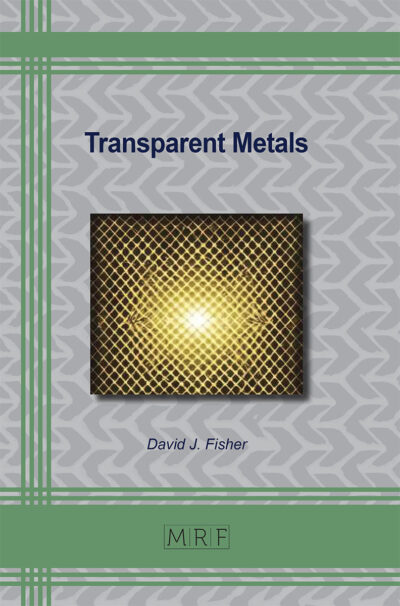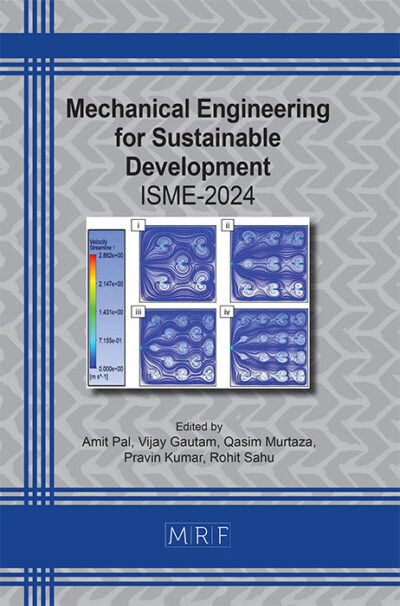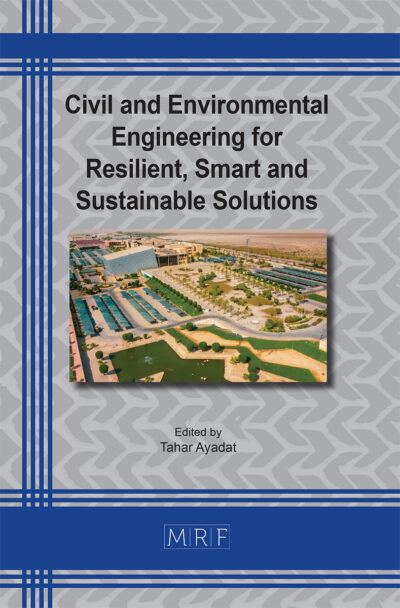Modeling approaches for the decomposition behavior of preconsolidated rovings throughout local deformation processes
Benjamin Gröger, Johannes Gerritzen, Andreas Hornig, Maik Gude
Abstract. This paper investigates two modeling approaches for the simulation of the deformation and decomposition behavior of preconsolidated rovings above the thermoplastic matrix’ melting temperature. This is crucial for capturing the local material structure after processes introducing highly localized deformation such as mechanical joining processes between metal and fiber reinforced thermoplastics (FRTP). A generic finite element (FE) model is developed, incorporating interfaces discretized through either cohesive zone (CZ) elements or Coulomb friction-based contacts. The material parameters for the FE elements are derived from the initial stiffness of a statistical volume element (SVE) at micro scale modelled with an Arbitrary-Lagrange-Eulerian method for three load cases. The CZ properties calculated are based on the shear viscosity of the composite. The CZ and contact modelling approaches are evaluated using three load cases of the SVE, comparing force-displacement curves. Under simple loading conditions, such as normal pressure tension and bending, both methods produce similar results; however, in complex load cases, the CZ approach shows clear advantages in handling interface interactions and shows robust simulations. The CZ approach thus presents a promising method for simulating roving decomposition in FRTP-metal joining applications above the matrix’ melting temperature.
Keywords
Process, Thermoplastic Fiber Reinforced Plastic, Finite Element Method (FEM)
Published online 4/1/2025, 8 pages
Copyright © 2025 by the author(s)
Published under license by Materials Research Forum LLC., Millersville PA, USA
Citation: Benjamin Gröger, Johannes Gerritzen, Andreas Hornig, Maik Gude, Modeling approaches for the decomposition behavior of preconsolidated rovings throughout local deformation processes, Materials Research Proceedings, Vol. 52, pp 268-275, 2025
DOI: https://doi.org/10.21741/9781644903551-33
The article was published as article 33 of the book Sheet Metal 2025
![]() Content from this work may be used under the terms of the Creative Commons Attribution 3.0 license. Any further distribution of this work must maintain attribution to the author(s) and the title of the work, journal citation and DOI.
Content from this work may be used under the terms of the Creative Commons Attribution 3.0 license. Any further distribution of this work must maintain attribution to the author(s) and the title of the work, journal citation and DOI.
References
[1] Troschitz J, Gröger B, Würfel V, Kupfer R, Gude M. Joining Processes for Fibre-Reinforced Thermoplastics: Phenomena and Characterisation. Materials (Basel) 2022;15(15). Https://doi.org/10.3390/ma15155454
[2] Seidlitz H, Gerstenberger C, Osiecki T, Simon S, Kroll L. High-performance lightweight structures with Fiber Reinforced Thermoplastics and Structured Metal Thin Sheets. JMSR 2014;4(1). Https://doi.org/10.5539/jmsr.v4n1p28
[3] Kunze E, Galkin S, Böhm R, Gude M, Kärger L. The Impact of Draping Effects on the Stiffness and Failure Behavior of Unidirectional Non-Crimp Fabric Fiber Reinforced Composites. Materials (Basel) 2020;13(13). Https://doi.org/10.3390/ma13132959
[4] Azzouz R, Allaoui S, Moulart R. Composite preforming defects: a review and a classification. Int J Mater Form 2021;14(6):1259–78. https://doi.org/10.1007/s12289-021-01643-7
[5] Remko Akkerman, Sebastiaan Haanappel, Ulrich Sachs, Bert Rietman. Complex stamp forming of advanced thermoplastic composites. In: R. Rolfes, E.L. Jansen, editors. 3rd ECCOMAS Thermatic Cconference on Mechnical Response of Composites 2011. Leibniz Universität Hannover; 2011, p. 27–34
[6] Shuler SF, Advani SG. Transverse squeeze flow of concentrated aligned fibers in viscous fluids. Journal of Non-Newtonian Fluid Mechanics 1996;65(1):47–74. https://doi.org/10.1016/0377-0257(96)01440-1
[7] Barnes JA, Cogswell FN. Transverse flow processes in continuous fibre-reinforced thermoplastic composites. Composites 1989;20(1):38–42. https://doi.org/10.1016/0010-4361(89)90680-0
[8] Sheet Metal 2023. Materials Research Forum LLC; 2023. https://doi.org/10.21741/9781644902417
[9] Murtagh AM, Mallon PJ. Chapter 5 Characterisation of shearing and frictional behaviour during sheet forming. In: Composite Sheet Forming. Elsevier; 1997, p. 163–216.
[10] Gröger B, Würfel V, Hornig A, Gude M. Forming process induced material structure of fibre-reinforced thermoplastics – Experimental and numerical investigation of a bladder-assisted moulding process. Journal of Advanced Joining Processes 2022;5(7):100100. https://doi.org/10.1016/j.jajp.2022.100100
[11] Gröger B. Numerical and experimental investigations of piercing fibre-reinforced thermoplastics. In: Sheet Metal 2023. Materials Research Forum LLC; 2023, p. 171–178.
[12] Borowski A, Gröger B, Füßel R, Gude M. Characterisation of Fibre Bundle Deformation Behaviour—Test Rig, Results and Conclusions. JMMP 2022;6(6):146. https://doi.org/10.3390/jmmp6060146
[13] Dörr D, Henning F, Kärger L. Nonlinear hyperviscoelastic modelling of intra-ply deformation behaviour in finite element forming simulation of continuously fibre-reinforced thermoplastics. Composites Part A: Applied Science and Manufacturing 2018;109(0):585–96. https://doi.org/10.1016/j.compositesa.2018.03.037
[14] Kapshammer A, Miron MC, Dangl L, Major Z. Interface Characterization of Consolidated PPGF Tapes on PPGF Mat Material. Polymers 2023;15(4):935. https://doi.org/10.3390/polym15040935
[15] Gröger B, Wang J, Bätzel T, Hornig A, Gude M. Modelling and Simulation Strategies for Fluid-Structure-Interactions of Highly Viscous Thermoplastic Melt and Single Fibres-A Numerical Study. Materials (Basel) 2022;15(20). Https://doi.org/10.3390/ma15207241
[16] Gröger B, Gerritzen J, Hornig A, Gude M. Developing a numerical modelling strategy for metallic pin pressing processes in fibre reinforced thermoplastics to investigate fibre rearrangement mechanisms during joining. Proceedings of the Institution of Mechanical Engineers, Part L: Journal of Materials: Design and Applications 2024;238(12):2286–98. https://doi.org/10.1177/14644207241280035
[17] Roberts RW, Jones RS. Rheological characterization of continuous fibre composites in oscillatory shear flow. Composites Manufacturing 1995;6(3-4):161–7. https://doi.org/10.1016/0956-7143(95)95007-L
[18] Manual L-DKU’s. vol. II. Livermore Software Technology Corporation (LSTC) 2013.
[19] Gorczyca-Cole JL, Sherwood JA, Chen J. A friction model for thermostamping commingled glass–polypropylene woven fabrics. Composites Part A: Applied Science and Manufacturing 2007;38(2):393–406. https://doi.org/10.1016/j.compositesa.2006.03.006
[20] M. Kuhtz, J. Gerritzen, J. Wiegand, A. Hornig, M. Gude. Modelling delamination in fibre-reinforced composites subjected to through-thickness compression by an adapted cohesive law. [November 01, 2024.627Z].

